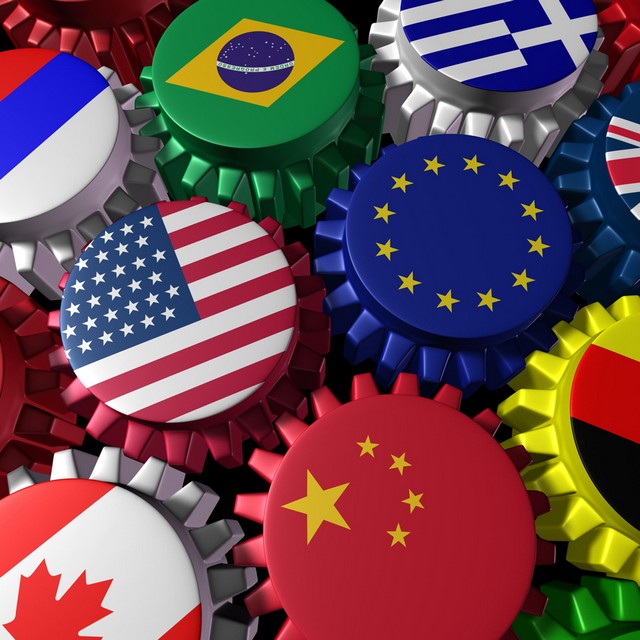By Chandra Muzaffar
A number of important initiatives linked largely to the economy made public in the last few years may have a huge impact upon the future of humankind. ASEAN and China have played a pioneering role in some of them.
The ASEAN initiated Regional Comprehensive Economic Partnership (RCEP), negotiations for which started in early 2013, seeks to forge a pact among the 10 ASEAN members and its six free trade partners, namely, Australia, China, India, Japan, New Zealand and South Korea on trade in goods and services, investment, economic and technical cooperation, intellectual property, competition, dispute settlement and other issues. RCEP is, in a sense, a diluted version of the East Asia Economic Caucus (EAEC) proposed by former Malaysian Prime Minister, Dr. Mahathir Mohamad, in the early nineties. EAEC, confined to ASEAN and the three East Asian states, China, Japan and South Korea, had a more coherent economic, cultural, geographical and historical basis but the idea was vehemently opposed by the United States of America and to a lesser extent, by Japan. In spite of its geographical dispersion, RCEP is still a viable proposition. At its third ministerial meeting in Kuala Lumpur in August 2015, there was a determined effort to give RCEP a push. Some consensus was reached about eliminating tariffs in the goods sector. There are issues pertaining to agriculture, investments, intellectual property and dispute settlement which have yet to be resolved. A momentum of sorts has been created in Kuala Lumpur largely through the hard work of officials at the Malaysian Ministry of International Trade and Industry (MITI) which one hopes will be sustained through future meetings.
A more significant initiative emanating from China is of course the much publicized Asian Infrastructure Investment Bank (AIIB). Formed in October 2014, it is a multilateral development bank that aims to provide finance to infrastructure projects in Asia. It has been estimated that Asia requires 8 trillion US dollars’ worth of infrastructure investment from 2010 to 2020 to be able to sustain its economic development. Neither the Japan led Asian Development Bank (ADB) nor the US helmed World Bank has the capacity or the inclination to fund such a mammoth transformation. China’s willingness to respond to the challenge has been warmly welcomed by a number of countries. Besides, the Chinese leadership is also frustrated by the lack of sincerity on the part of the US and Japanese governments in reforming the World Bank and the ADB respectively to reflect the new demands and the emerging realities of the global economy.
While the AIIB is an important development in itself, it is the response of a number of close allies of the US to the bank which is revealing of current and future patterns of global economic power. Sensing the shift in global economic power, Britain withstood intense pressure from the US Administration and joined the AIIB in March 2015. Three other European allies of the US — Germany, France and Italy — followed suit. US allies from West Asia, Eastern Europe and the Pacific have all signed up. The bank’s membership is rapidly approaching 70. The two major economies that have decided to stay out are the US and Japan.
It is not just the AIIB that is reflective of the emerging pattern of global economic power. China has also been at the forefront of BRICS which brings together Brazil, Russia, India, China and South Africa. Collectively, this grouping, which held its first summit in Yekaterinburg, Russia in June 2009, represents 3 billion people. Its nominal Gross Domestic Product (GDP) stands at 16.039 trillion US dollars. BRICS emphasizes cooperation in economic and financial matters. It created a bank called the New Development Bank with a 100 billion dollar base in July 2015.
There is a third Chinese initiative that has the potential for transforming a whole range of economies in both the Global South and the Global North. The One Belt One Road (OBOR) project built upon the ancient Silk Road focuses on both land and maritime routes. The aim is to invest in infrastructure development and other economic activities in Southeast Asia, parts of South Asia, Central Asia, East Africa and West Asia right up to Europe.
The question that is often asked nowadays is whether China, given its slowing economy, would be able to finance all these massive projects in the coming years? The slowdown is to a great extent due to a deliberate policy decision to shift from export-led growth to domestic consumption. This in turn would help to reduce income and social disparities within China which would in the medium and long-term strengthen the economy and society.
Disparities are undoubtedly one of the formidable challenges facing China. Corruption, enhancing the rule of law, legitimizing dissent, and improving the quality of the environment would be some of the other major challenges which are all being addressed by the leadership with varying degrees of effectiveness. But China’s ability to transform the global economy would also be determined by the solidarity of its ties with its neighbors and friends and whether it succeeds in overcoming certain longstanding territorial disputes with some of them. There is yet another decisive factor that will impact upon China’s global role: how would the antagonism of those who resent China’s rise as a global power express itself in the coming years?
Dr. Chandra Muzaffar is the President of the International Movement for a Just World (JUST).
Malaysia.
21 September 2015.

